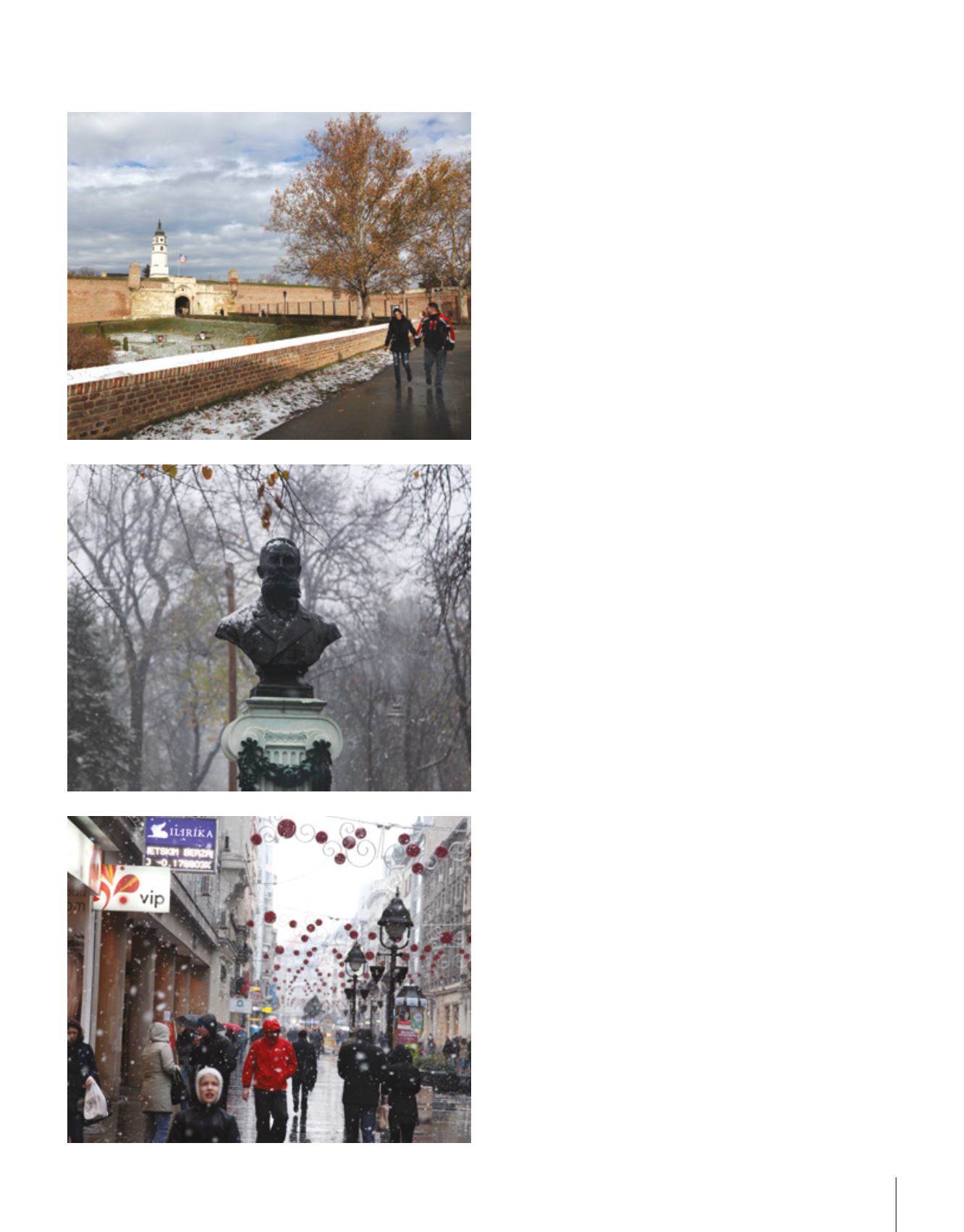
121
üzerinden, Sava Nehri’nin
berrak sularını izleyerek, Stari
Grad’a yürüyebilirsiniz.
Sırplar, genel olarak cana
yakın ve sıcakkanlı insanlar. Bir
şey sorunca hemen yardımcı
olmaya çalışıyorlar. Tüm
Orta Doğu ve Balkanlar’da
olduğu gibi, onlar da Türk
dizilerinin hayranı. Bu yüzden
Türkiye dediğinizde çok
pozitif yaklaşıyorlar. Diziler,
Kıvanç Tatlıtuğ, İstanbul,
Fenerbahçe, Galatasaray,
Kızılyıldız, Tanjeviç, Bregoviç,
Dokovic, simit, börek, kebap
derken samimiyet tavan
yapıyor. Sırplarla Türkler
arasında Osmanlılıktan gelen
400 küsur yıllık bir ortak
geçmiş ve kültürün olduğunu
hatırlatmama gerek yok
sanırım. Onlar da bizim gibi
bir yönleriyle Avrupalılar, diğer
yönleriyle doğulu. Gerçekten
benziyoruz. Bizden genel
olarak ilk dikkat çekici fark ise
Slav ırkının genel özellikleri.
Evet biraz uzun ve genel olarak
birazdan fazla güzeller. Sırp
halkı aynı zamanda eğitimli de
bir halk. Taksi şoförleri dahil
neredeyse herkes İngilizce
biliyor. Hatta bizim şoförlerde
hiç göremeyeceğimiz şekilde,
taksi sıralarının gelmesini
beklerken ya kitap okuyorlar
ya da satranç oynuyorlar. Eh
bu da bayağı hatırı sayılır bir
fark. Tabi diğer eski Doğu
Bloğu ülke taksicileri ile
de ortak bir özellik. Eğitim
şart. Bana bir de çok mutlu
göründü Belgradlılar. Genel
olarak pozitif bir enerjileri var.
Çok romantik olduklarını da
söyleyebilirim. Manzara gören
çiftlerin uzun uzun sarılma ve
koklaşma seremonileri seyir
terasları ve nehir kenarlarının
rutini. Dedik ya ana temamız
aşk ve Balkan romantizmi...
Lafı daha fazla uzatmadan
gezi rotamızı dillendirmeye
başlayalım. Eski şehir
bölgesinin batı ucunda Kale
(Kalemegdan) diğer ucunda
like Istiklal Street. It is always
crowded. It has many historical
buildings, cafés, restaurants,
and shops. The Knez Mihailove
Street, where the oldest and
most valuable statues of
Belgrade are protected by law, is
ideal for both shoppers and the
ones who would prefer chilling
out in cafés and restaurants.
The district, a hub with gardens,
fountains, mosques, and stores
in the Ottoman period, went
through urban planning in
the end of the 19th century to
look the way it currently does.
The notable figures of the city,
the richest businessmen, and
political elite started buying
houses here to live. Just like the
project names of today, even
though some special buildings
have changed hand and are
used for other purposes, they
are still remembered with
their first owners. Like Hristina
Kumanudi’s house used as
Belgium’s Britain’s Counsalate,
Marko Stajanoviç’s house as
the Academy Gallery… Knez
Mihailove Street is the place you
will always end up to explore, to
set personal favorites.
As you walk on the street, if
you have seen the tower of St.
Michael’s Cathedral, you are
close to the Castle. You can enter
the Kalemegdan complex from
the lower part, close to the river;
we can make a detour here to
see the Cathedral. Completed in
1840 by the sculpture Dimitrije
Pancevo, dedicated to Archangel
Michael, holds the tomb of
Milos Obrenovic who started
the Serbian rebellion against the
Ottomans. I found it somewhat
ordinary but the surrounding is
nice and should be seen. Konak
Kneginje Ljubice, meaning the
Mansion of the Princess is right
next door.
The name of the planes
nearby the Belgrade castle is
formed of the words “kale” and
“meydan” meaning castle and
square in Turkish, respectively.
The Kalemegdan, called the
same since the Ottomans, is
not only the Belgrade Castle
and its gardens. It is a big
complex formed of museums,
monuments, parks, towers, and
zoos. The Kalemagden Park is
really the much-loved place for
city’s residents and the tourists.


